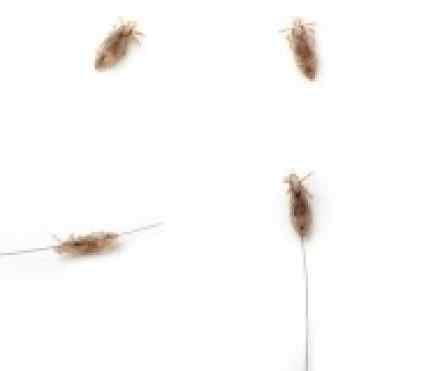
What is it?
Lice are tiny, wingless, parasitic insects that feed on your blood. Lice are easily spread — especially by schoolchildren — through close personal contact and by sharing belongings.
Several types of lice exist:
- Head lice. These lice develop on your scalp. They're easiest to see at the nape of your neck and over your ears.
- Body lice. These lice live in clothing and on bedding and move on to your skin to feed. Body lice most often affect people — such as homeless or transient individuals — who aren't able to bathe or launder clothing regularly.
- Pubic lice. Commonly called crabs, these lice occur on the skin and hair of your pubic area and, less frequently, on coarse body hair, such as chest hair, eyebrows or eyelashes.
You or your child can have good personal hygiene habits and still get lice. Unless treated properly, this condition can become a recurring problem.
Symptoms
Signs and symptoms of lice include:
- Intense itching.
- Tickling feeling from movement of hair.
- Lice on your scalp, body, clothing, or pubic or other body hair. Adult lice may be about the size of a sesame seed or slightly larger.
- Lice eggs (nits) on hair shafts. Nits resemble tiny pussy willow buds. Nits can be mistaken for dandruff, but unlike dandruff, they can't be easily brushed out of hair.
- Small, red bumps on the scalp, neck and shoulders.
Causes
You can get lice by coming into contact with either lice or their eggs. Eggs hatch in about one week. Lice can't fly or walk on the ground. They spread through:
- Head-to-head or body-to-body contact. This may occur as children or family members play or interact closely.
- Proximity of stored belongings. Storing infected clothing in closets, in lockers or on side-by-side hooks at school, or storing personal items such as pillows, blankets, combs and stuffed toys in proximity at home can permit lice to spread.
- Items shared among friends or family members. These may include clothing, headphones, brushes, combs, hair decorations, towels, blankets, pillows and stuffed toys.
- Contact with contaminated furniture. Lying on a bed or sitting in overstuffed, cloth-covered furniture recently used by someone infected with lice can spread them. Lice can live for one to two days off the body.
- Sexual contact. Pubic lice usually spread through sexual contact and most commonly affect adults. Pubic lice found on children may be a sign of sexual exposure or abuse.
Diagnosis
During an examination, your doctor may examine you for lice using a magnifying lens and check for nits using a special light, called a Wood's light, which makes the nits look pale blue.
Head lice
A diagnosis of head lice can be made after a live young or adult louse is seen in the hair or on the scalp, or after one or more nits is seen on hair shafts located within 1/4 inch (6.4 millimeters) of the scalp.
If you don't see any live lice or you see nits that are more than 1/4 inch away from the scalp, the infestation is no longer active and you don't need treatment.
Body lice
A diagnosis of body lice may be made if eggs or crawling lice are found in the seams of clothing or on bedding. It's possible to see a body louse on skin if it crawls there to feed.
Pubic lice
Pubic lice are diagnosed when moving lice or nits are seen on hair in the pubic area or on other areas of coarse hair, such as chest hair, eyebrows or eyelashes.
References
http://www.medicinenet.com/head_lice/article.htm
http://www.mayoclinic.org/diseases-conditions/lice/basics/definition/con-20021627
http://www.healthline.com/health-slideshow/home-remedies-for-head-lice
https://www.hse.ie/eng/health/az/H/Head-lice/

